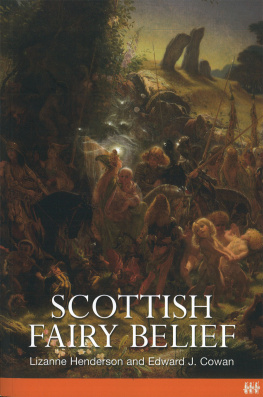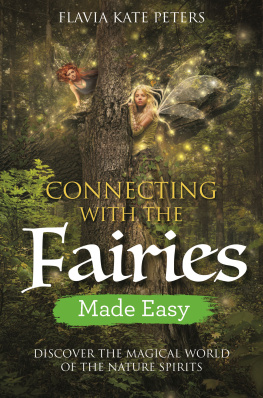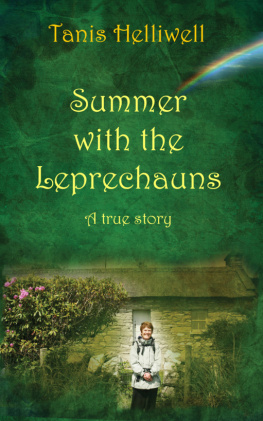Footnotes
Quite appropriately it means place of cairns or tumuli--those prehistoric monuments religious and funereal in their purposes. Carnac seems to be a Gallo-Roman form. According to Professor J. Loth, the Breton (Celtic) forms would be: old Celtic, Carna_co-s; old Breton (ninth-eleventh century), Carnoc; Middle Breton (eleventh-sixteenth century), Carneuc; Modern Breton, Carnec.
For we cannot offer any proof of what at first sight appears like a philological relation or identity between Carnac and Karnak.
Andrew Lang, Kirk's Secret Commonwealth (London, 1893), p. xviii; and History of Scotland (Edinburgh, 1900-07).
Cf. David MacRitchie's published criticisms of our Psychological Theory p. xx in The Celtic Review (January 1910), entitled Druids and Mound-Dwellers; also his first part of these criticisms, ib. (October 1909), entitled A New Solution of the Fairy Problem.
Alexander Carmichael, Carmina Gadelica (Edinburgh, 1900), i, p. xix.
The ceilidh of the Western Hebrides corresponds to the veille of Lower Brittany (see pp. 221 ff.), and to similar story-telling festivals which formerly flourished among all the Celtic peoples. 'The ceilidh is a literary entertainment where stories and tales, poems, and ballads, are rehearsed and recited, and songs are sung, conundrums are put, proverbs are quoted, and many other literary matters are related and discussed.'--Alexander Carmichael, Carmina Gadelica, i, p. xviii.
I am indebted for this information to the late Mr. Davies, the competent scholar and antiquarian of Newcastle-Emlyn, where for many years he has been vicar.
In the Gnosis, St. Michael symbolizes the sun, and thus very appropriately at St. Michael's Mount, Cornwall, at Mont St. Michel, Carnac, and also at Mont St. Michel on the coast of Normandy, replaced the Great God of Light and Life, held in supreme honour among the ancient Celts.
In this connexion we may think of the North and South Magnetic Poles of the earth as centres of definite yet invisible forces which can be detected, and to some extent measured scientifically.
Anglo-Irish for rath, a circular earthen fort.
Throughout Ireland there are many ancient, often prehistoric, earth-works or tumuli, which are popularly called forts, raths, or duns, and in folk-belief these are considered fairy hills or the abodes of various orders of fairies. In this belief we see at work a definite anthropomorphism which attributes dwellings here on earth to an invisible spirit-race, as though this race were actually the spirits of the ancient Irish who built the forts. As we proceed, we shall see how important and varied a part these earthworks play in the Irish Fairy-Faith (cf. chapter viii, on Archaeology).
An Irish mystic, and seer of great power, with whom I have often discussed the Fairy-Faith in its details, regards 'fairy paths' or 'fairy passes' as actual magnetic arteries, so to speak, through which circulates the earth's magnetism.
Irish scholars differ as to the signification of Meadha. Some say that it is the genitive case of Meadh, the name of some ancient chieftain who was buried in the hill. Knock Magh is the spelling often used by writers who hold that the name means "Hill of the Plain".'--JOHN GLYNN.
On September 8, 1909, about a year after this testimony was given, Mr. ------, our seer-witness, at his own home near Grange, told to me again the same essential facts concerning his psychical experiences as during my first interview with him, and even repeated word for word the expressions the 'gentry' used in communicating with him. Therefore I feel that he is thoroughly sincere in his beliefs and descriptions, whatever various readers may think of them. As his neighbours said to me about him--and I interviewed a good many of them--'Some give in to him and some do not'; but they always spoke of him with respect, though a few naturally consider him eccentric. At the time of our second meeting (which gave me a chance to revise the evidence as first taken down) Mr. ------ made this additional statement:--'The gentry do not tell all their secrets, and I do not understand many things about them, nor can I be sure that everything I tell concerning them is exact.'
A learned and more careful Irish seer thinks this head-dress should really be described as an aura.
I have been told by a friend in California, who is a student of psychical sciences, that there exist in certain parts of that state, notably in the Yosemite Valley, as the Red Men seem to have known, according to their traditions, invisible races exactly comparable to the 'gentry' of this Ben Bulbin country such as our seer-witness describes them and as other seers in Ireland have described them, and quite like the 'people of peace' as described by Kirk, the seventh son, in his Secret Commonwealth (see this study, p. 85 n.). These California races are said to exist now, as the Irish and Scotch invisible races are said to exist now, by seers who can behold them; and, like the latter races, are described as a distinct order of beings who have never been in physical embodiments. If we follow the traditions of the Red Men, the Yosemite invisible tribes are probably but a few of many such tribes scattered throughout the North American continent; and equally with their Celtic relatives they are described as a warlike race with more than human powers over physical nature, and as able to subject or destroy men.
This refers to a tale told by Hugh Currid, in August, 1908, about Father Patrick and Father Dominick, which is here omitted because re-investigation during my second visit to Grange, in September, 1909, showed the tale to have been incorrectly reported. The same story, however, based upon facts, according to several reliable witnesses, was more accurately told by Patrick Waters at the time of my re-Investigation, and appears on page 51.
It happened that I had in my pocket a fossil, picked out of the neighbouring sea-cliff rocks, which are very rich in fossils. I showed this to Pat to ascertain if what he had had in his hand looked anything like it, and he at once said 'No'.
After this Ossianic fragment, which has been handed down orally, I asked Pat if he had ever heard the old people talk about Dermot and Grania, and he replied;--'To be sure I have. Dermot and Grania used to live in these parts. Dermot stole Finn MacCoul's sister, and had to flee away. He took with him a bag of sand and a bunch of heather; and when he was in the mountains he would put the bag of sand under his head at night, and then tell everybody he met that he had slept on the sand (the sea-shore); and when on the sand he would use the bunch of heather for a pillow, and say he had slept on the heather (the mountains). And so nobody ever caught him at all.'
As to probable proof that there was an Atlantis
This refers to Robert Kirk, minister of Aberfoyle, who wrote The Secret Commonwealth
'In going from East Ireland to Galway, during the summer of 1908, I passed through the country near Mullingar, where there was then great excitement over a leprechaun which had been appearing to school-children and to many of the country-folk. I talked with some of the people as I walked through part of County Meath about this leprechaun, and most of them were certain that there could be such a creature showing itself; and I noticed, too, that they were all quite anxious to have a chance at the money-bag, if they could only see the little fellow with it. I told one good-natured old Irishman at Ballywillan--where I stopped over night--as we sat round his peat fire and pot of boiling potatoes, that the leprechaun was reported as captured by the police in Mullingar. 'Now that couldn't be, at all,' he said instantly, 'for everybody knows the leprechaun is a spirit and can't be caught by any blessed policeman, though it is likely one might get his gold if they got him cornered so he had no chance to run away. But the minute you wink or take your eyes off the little devil, sure enough he is gone.'






